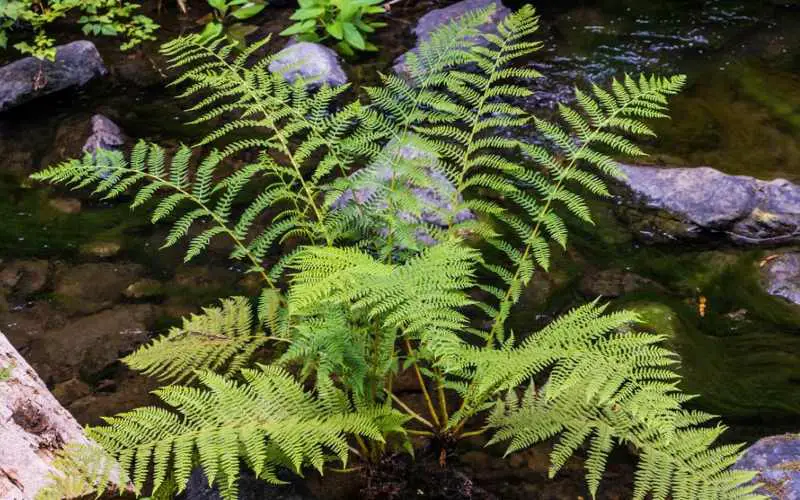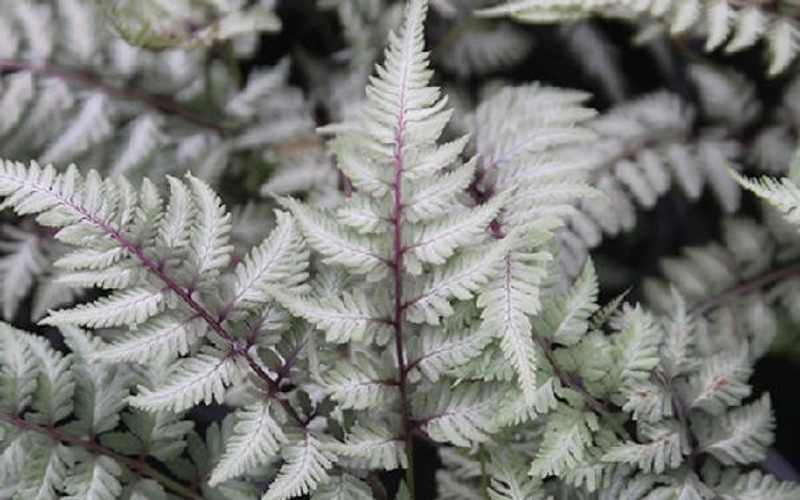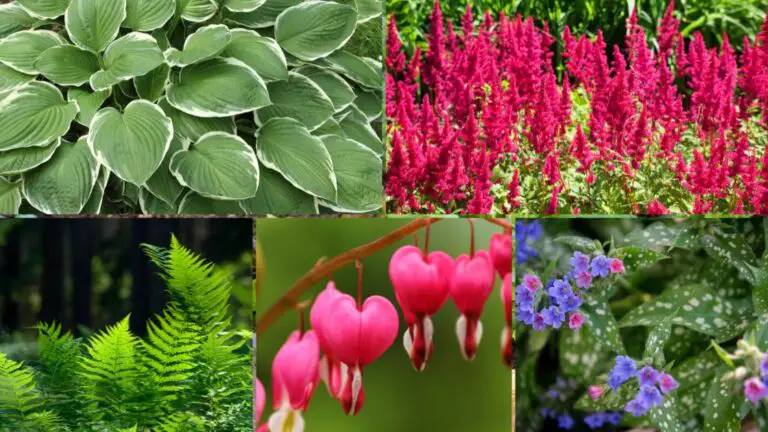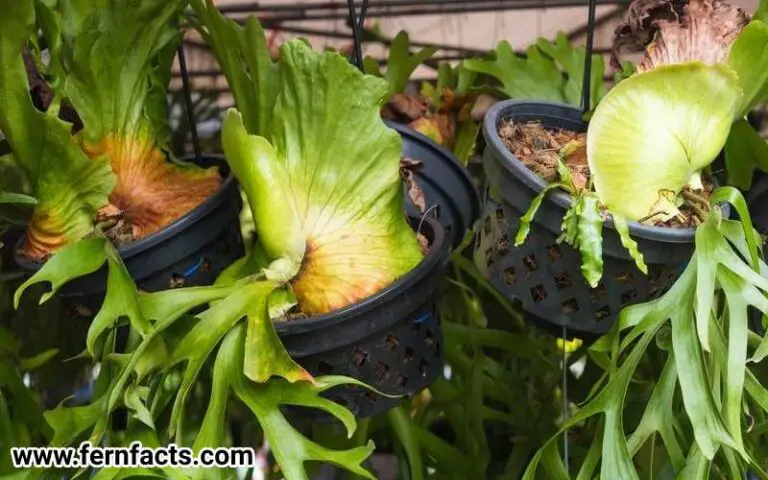What is a Ghost Fern – Lady Fern Ghost Plant Info
Have you heard of Ghost Fern? Or Ghost Lady Fern? Do you get confused about what exactly this fern is or what its characteristics are? So no worries! Go through this article rigorously.
In this article, we’ll discuss what Ghost ferns along with their characteristics. Besides, we’ll also talk about their growing and planting requirements at the same time suggest some contrasting plants to enhance your garden’s outward appearance.
So let’s not waste any time and jump to our topic.
Overview of Lady Ghost Fern
- Botanical name: Athyrium- hybrida
- Common name: lady Ghost fern
- Family: Athyriaceae
- Plants: Deciduous hybrid fern
- Native range: Greenland, Virginia, Dakotas
- Native habitats: Woodlands,
- Shade requirements: partial to full shade
- Height: around 2 ft
- Width: around 1 to 2 ft
- Soil: acidic, neutral, moist well-drained
- Flowers: non-flower
- Maintenance: low
- Hardiness: 4,5,6,7,8
Ghost Lady ferns are a mixed hybrid of Japanese-painted ferns and Lady ferns. These ferns have beautiful grayish-silver color foliage along with a slightly bluish appearance and an upright position just from their parental ferns’ genes.
Since they are hybrid deciduous plants, in warm seasons they can tolerate hardiness up to 8; however, in winter seasons the fronds die back and remain dormant.
Later on, in spring seasons, these Ghost Lady ferns again get their fronds back with their silvery bluish appearances. These ferns can grow around 2 feet in height and 1.5 to 2 feet in width.
These Ghost lady ferns prefer moist, humid atmospheres with shaded places. Mostly, you can find these ferns in Greenland, south Virginia, and Dakota East as their native regions.
In tropical native environments, these Ghost ferns are more likely to inhabit woodlands. These ferns are mostly used as garden borders, shade gardens, rock gardens, or woodland gardens.
Deer and rabbits are not fond of these Ghost lady ferns. That’s why you can use them as a border to protect your house as they are deer and rabbit-resistant ferns.
Moreover, these ferns also got an award of Garden Merit from the Royal Horticultural Society because of their unique hybrid or mixed appearance and characteristics.
Care and Maintenance of Ghost Lady Fern
Let’s go through the growing and planting needs of these ferns so that you can plant this fern at your house.
Light Conditions
Ghost Lady fern prefers partial to full shade places to grow. This means a partially bright place under indirect sunlight would be a suitable place.
Avoid direct sun exposure to them because full sunlight can burn their beautiful hybrid colorful fronds. Since they have beautiful silvery grayish fronds, excessive sunlight or sunny places can discolor their fronds.
If you can implicate their ideal shaded place to them, they can thrive there.
Watering
Ghost lady fern can tolerate drought or dryness in the soil. However, they prefer moisture in their soil. Don’t let the soil dry out for a longer period, it can harm your plant.
Additionally, excessive dryness can make your plant dehydrated and dull which can lead your Ghost ferns to have discolored fronds.
Therefore, try to give water regularly while monitoring the soil’s condition. Based on your plant’s conditions, whether it’s an indoor plant or outdoor, you need to water them.
Since outdoor Ghost ferns tend to dry out more often, you may need to water them more compared to your indoor plant. However, don’t overwater your plants, it can be as equally harmful as under-watering. Overwatering can be dangerous and lead your delicate ghost plant to have rotten roots.
Thus, make sure the soil is moist, not overly soaked or drought.
Soil
Ghost lady ferns prefer acidic, fertile, and rich soil with a well-drained system. You can enrich the soil’s nutrients with other organic compost mixtures like peat moss, perlite, vermiculite, sand, dry leaf mold, etc.
All the Richness of the soil will help it to grow healthily by holding moisture in the soil.
Hence, choose a well-draining acidic soil, and fertile soil that can absorb all the excess water from the soil without waterlogging.
Temperature and Humidity
Like all other ferns, these Ghost Lady ferns also thrive in humid atmospheres. Their ideal temperature is between 65 to 70° Fahrenheit where they can grow and flourish.
As they are also under the 4 to 8 Hardiness zone, that’s why they enjoy the humid atmosphere most. Too much cold or warm will be problematic for them to thrive.
However, you can also use an artificial humidifier to increase the humidity around your plants.
Pruning
Unlike many ferns, Ghost Lady ferns don’t need much pruning and grooming. However, as it’s a deciduous plant, it loses some of its fronds in the winter season.
Also, their fronds become shabby or tattered in those seasons. So you can simply remove or cut off their dead or damaged fronds that happen due to excessive sunlight.
It will keep the plants neat while maintaining their freshness until their growing seasons.
Ghost Lady Fern Pests and Diseases
Surprisingly, these hybrid ferns are free from pests and any kind of fatal diseases, unlike other ferns. They are very easy and low-maintenance ferns that don’t require much attention to grow.
So, this fern will be a very affordable plant for any beginner or gardener to have in their garden.
Ghost Lady Ferns Propagation Process
You can easily propagate these hybrid ferns by dividing the process. Spring would be the best selective time for propagation since this season is their growing season.
- In the spring seasons, you just need to dig up the whole plant from the pot or the ground.
- Wear gloves before starting the process.
- After removing the plant simply divide the roots with any trowel or any kind of sharp knife.
- Validate each part has an equal amount of roots.
- Prepare the new soil mixture with organic compost, sand, and other proportions.
- Make sure you choose well-drained fertile humus and rich soil to replant.
- Replant each section into your chosen spot.
- After replanting, water the plant properly for hydration.

Other Plants to Complement Ghost Lady Ferns in Gardens
You can use these hybrid Ghost ferns in woodlands, shaded gardens, or shaded borders in gardens. Similarly, you can also plant them in baskets, or containers as indoor plants.
However, you can complement these ferns with other plants in your garden which will enhance your garden’s appearance.
For instance, plants like hostas, bleeding hearts flowers, lungworts plants, and ligularia plants would fit perfectly in contrast with your Ghost Lady ferns.
Ghost fern’s silvery grayish foliage will perfectly be emphasized with all these different foliage and coloration. This beautiful contrast and combination will intensify your garden’s appearance.
Final Observation
On a final note, Ghost lady ferns are mixed hybrid ferns of two other known species (Japanese-painted ferns and lady ferns).
This ghost plant is very low maintenance and you can easily modify this fern at your house by providing it with its ideal condition such as lighting, soil, watering, temperature, etc.
Since they are low maintenance, they are pests and disease-free and don’t require pruning.
However, these delicate hybrid ferns can be contrasted with other plants that can amplify your garden’s look.







